According to the National Weather Service in Cleveland, OH (2019), by early afternoon of May 31, 1985, thunderstorms developed in Ontario, Canada just ahead of the cold front. Over a dozen tornadoes occurred in Ontario, with at least four F3s and two F4s reported. However, as the afternoon progressed, the thunderstorm activity developed south into northern Ohio. The initial thunderstorms in the state occurred between 3:00 pm and 4:00 pm EDT near Cleveland. At 4:10 pm, the NWS Office in Cleveland issued the first severe thunderstorm warning of the day for Ashtabula County. From that point on through the evening, weather conditions worsened. As the first reports of damage trickled in to the NWS offices in the area, it quickly became clear that a tornado outbreak of an unprecedented magnitude was taking place across the region. By the end of the evening, a total of forty-one tornadoes had occurred in the United States and Canada. Twenty-one tornadoes tracked across Northeast Ohio and Northwest Pennsylvania during the evening of May 31st. According to Ferguson, Ostby & Leftwich (1987), there were 94 fatalities in 1985 related to tornadoes and 76 of those fatalities occurred on May 31st. This is the story behind this historic tornado outbreak.
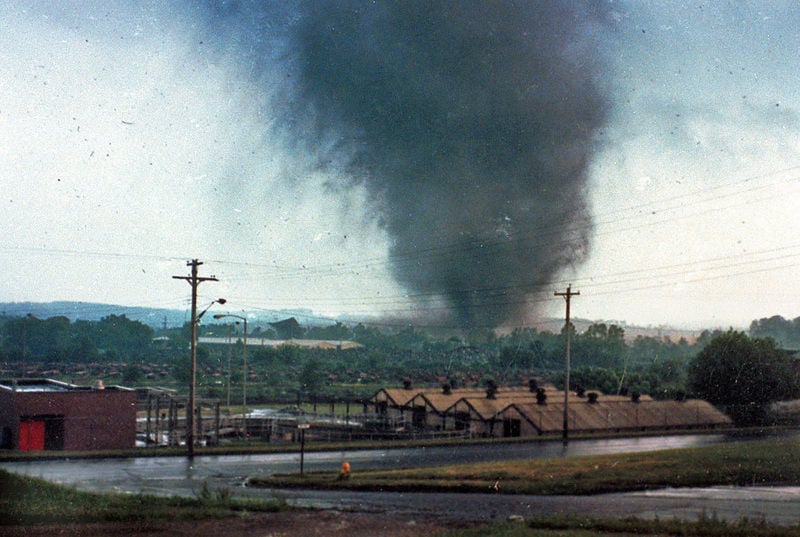
The Forecast

Figure 2 depicts the surface analysis on the morning of May 31st. In Figure 2, we can see a warm front advecting northward across Ontario and a cold front moving eastward (entering Michigan). The cold front would later provide the trigger for explosive supercell thunderstorm development. According to the National Weather Service in Cleveland, OH (2019), the upper air features from the the morning analysis gave classic indications of a significant severe weather event across eastern Ohio and western Pennsylvania. At 850 mb (Figure 3), very warm/moist air was surging north into the Ohio Valley and a dryline was observed over the western Great Lakes and Midwest.
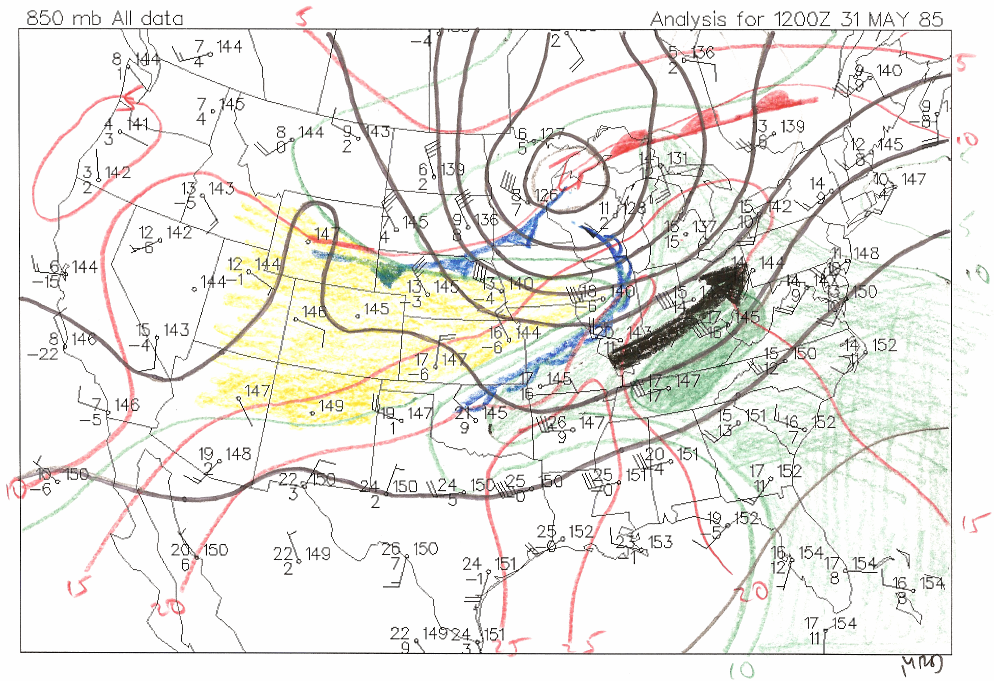
At 500 mb, a negatively tilted trough was positioned over the Midwest (Figure 3) with strong westerly winds in excess of 80 knots directly in front of the trough. The combination of strong westerlies aloft and strong southwesterly jet at 850 mb (Figure 3) allowed for increased vorticity over eastern Ohio and western Pennsylvania (NWS, 2019).
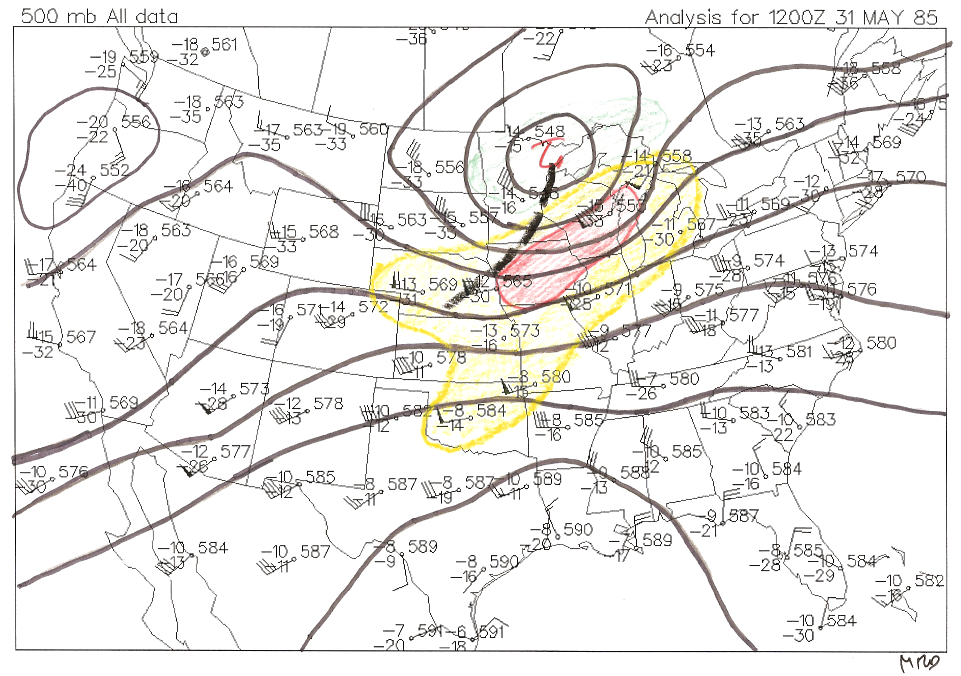
The main severe weather feature that was unusual is seen in Figure 5 on the 700 mb chart. The trough is shown with dry air aloft or “cap”. According to the NWS Cleveland, OH (2019), this is a classic signature of severe weather outbreaks for this region. This warm air aloft allowed surface temperatures to climb in the 80’s for the forecast area.
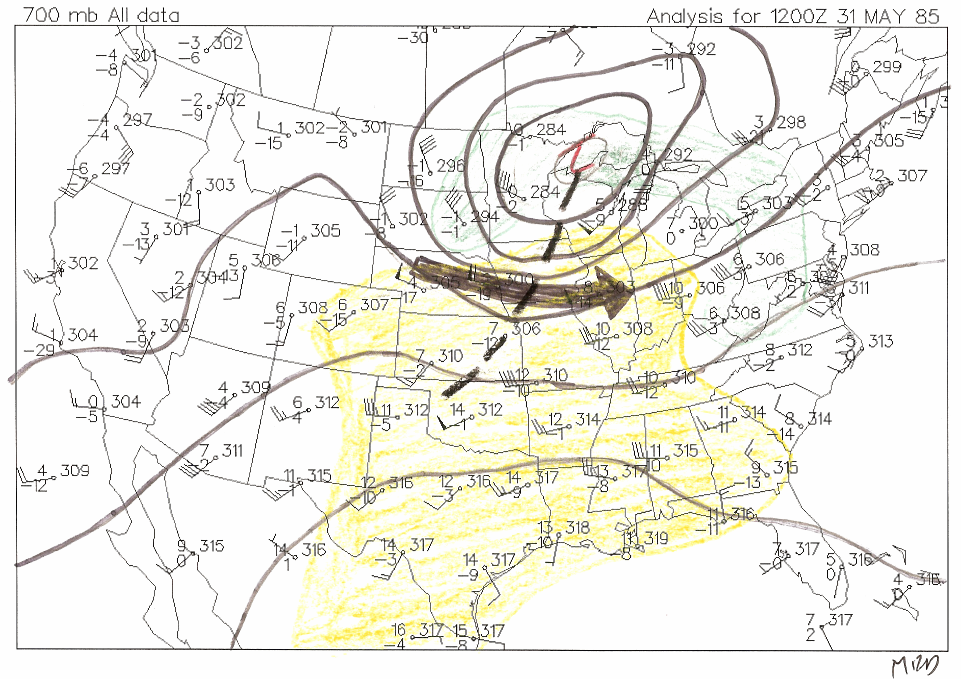
At the surface, an elevated mixed-layer (EML) with nearly adiabatic lapse rates (~13C/km) between 750 mb and 550 mb was noted (Figure 6). According to the NWS Cleveland, OH (2019), research has shown that this signature on a Skew-T is a good indicator of significant severe weather.
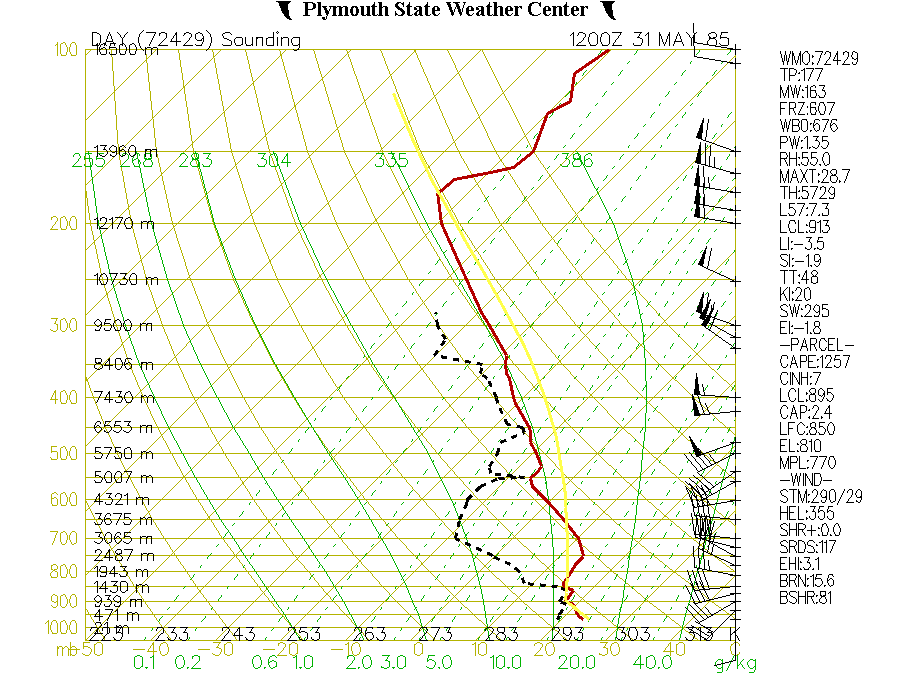
The sounding of Figure 6 shows a small capping inversion near the surface and an inversion from roughly 850 mb to 550 mb. Convective available potential energy (CAPE) at 1257 J/kg, helicity at 355 m2/s2 (which is favorable for the development of mid-level rotation) and energy helicity index (EHI) at 3.1. This sounding is quite impressive for a late-May morning and quite favorable for tornadoes.
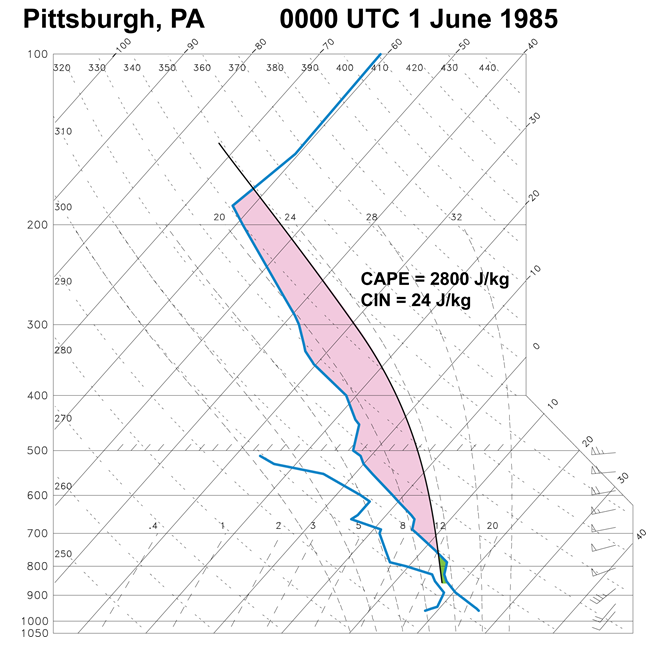
Figure 7 depicts a modified sounding depicting the CAPE at Pittsburgh, PA at 7:00 pm. This depicts 2800 J/kg of CAPE in the vicinity, therefore indicating a moderate to high value of instability in the atmosphere for severe thunderstorms.

At 18Z (2:00 pm EDT), the cold front was entering Ontario (Figure 8). According to Leduc, et al. (1986), an unseasonably strong low pressure center tracked across upper Michigan during the morning hours to just north of Sudbury by evening. The visible satellite loop in Figure 9 shows the development and explosive growth of thunderstorms across southern Ontario, Ohio, western Pennsylvania and western New York on the afternoon of May 31st.
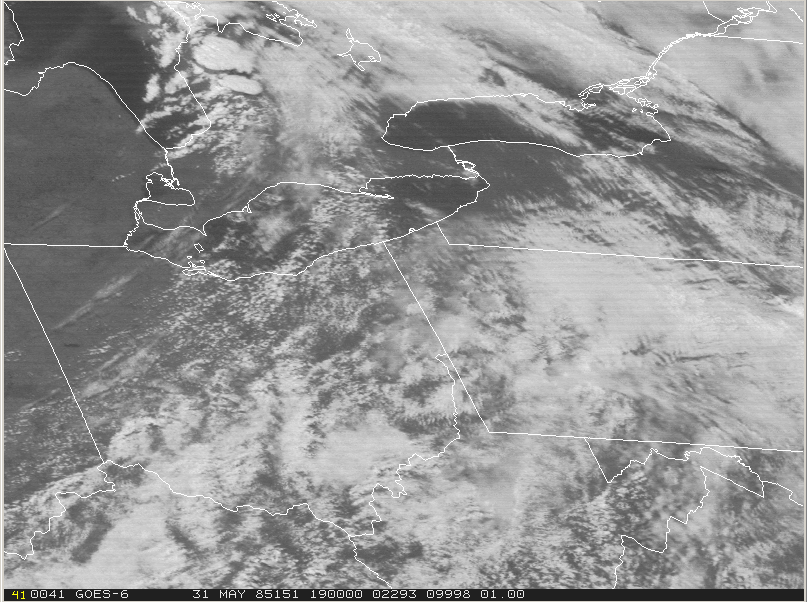
At 21Z (5:00 pm EDT), the cold front was in western Ontario (Figure 10).

Leduc et al. (1986) notes that the dynamics in place were strong since a sharp cold front (Figure 2, 3, 8 and 10) and an upper trough (Figure 4 and 5) was crossing Michigan, bringing with it strong westerlies in the upper-levels of the atmosphere.
Recap
In total, the Norfolk, NY F1 tornado of May 31, 1985 impacted St. Lawrence County in New York. According to NOAA (2019), the Norfolk F1 tornado caused no fatalities, no injuries and caused $250 thousand dollars in property damage. The tornado touched down west of Norfolk in St. Lawrence County at 10:30 pm EDT and traveled northeast for five miles to lift west of Joy Road. The maximum width of the tornado was 50 yards.
Sources
E. W. Ferguson, F. P. Ostby & P. W. Leftwich (1987). The Tornado Season of 1985. Retrieved from: https://journals.ametsoc.org/doi/pdf/10.1175/1520-0493%281987%29115%3C1437%3ATTSO%3E2.0.CO%3B2
The Herald (2015). Few visible scars remain of that Friday night in 1985. Retrieved from: https://www.sharonherald.com/news/local_news/few-visible-scars-remain-of-that-friday-night-in/article_3943bf03-2677-51ba-a2eb-0e8547f9f494.html
NWS
Weather Prediction Center (2017). North American Surface Analysis:
Surface Analysis 12Z Friday May 31, 1985. Retrieved from: https://www.wpc.ncep.noaa.gov/html/sfc2.shtml
National Weather Service Cleveland, Ohio (2019). The Tornado Outbreak of May 31, 1985. Retrieved from: https://www.weather.gov/cle/event_19850531_85outbreak
National Weather Service Cleveland, Ohio (2019). May 31, 1985 Tornado Outbreak: 34th Anniversary. Retrieved from: https://www.weather.gov/ctp/TornadoOutbreak_May311985#Meteorology
M. Leduc, O. Jacobsen and B. Greer (Winter 1986). The “Black Friday” Tornado Outbreak in Ontario [PDF file]. Chinook, 8, 13-18. Retrieved from: cmosarchives.ca/Chinook/ch0801.pdf
NWS State College, Pennsylvania (2019). Corry, PA. Retrieved from: https://www.weather.gov/ctp/Corry
N. Sleptzoff & T. Dunkle (2009). 1985 Tornado Outbreak Revisited [PowerPoint presentation]. Retrieved from: https://www.weather.gov/media/cle/Wx_Events/85outbreak/1985%20Tornado%20Final%5B1%5D.pdf
NOAA National Centers for Environmental Information (2019). Storm Events Database. Retrieved from: https://www.ncdc.noaa.gov/stormevents/

